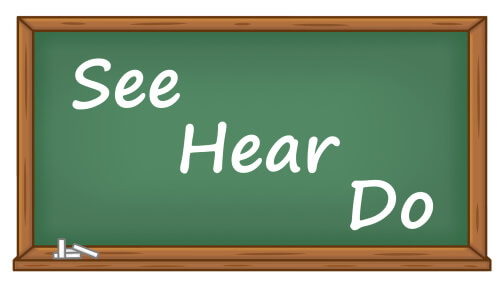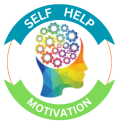You may have heard of learning styles before, but how can learning styles help personal development?
Table of Contents

Hi. Ian here and welcome to this article!
Today, we will talk about how learning styles can help personal development.
What are learning styles? They’re the different ways people learn and process information.
Everyone has different strengths and weaknesses in learning, and understanding your learning style can help you learn more effectively.
There are many different ways to learn, but some of the most common learning styles include:
- Visual learners: Visual learners learn best by seeing things. They may prefer to read diagrams, watch videos, or look at pictures when learning new information.
- Auditory learners: Auditory learners learn best by hearing things. They may prefer to listen to lectures, podcasts, or audiobooks when learning new information.
- Kinesthetic learners: Kinesthetic learners learn best by doing things. They may prefer to learn through hands-on activities, experiments, or role-playing.
Understanding your learning style can help you in some ways. For example, if you’re a visual learner, you may want to focus on using diagrams and pictures when studying. If you’re an auditory learner, you may want to try listening to recordings of lectures or reading your textbooks aloud. And if you’re a kinesthetic learner, you may want to try finding ways to make your learning more hands-on.
So, how can learning styles help personal development? Well, when you understand your learning style, you can learn more effectively, which can lead to many benefits, including:
- Increased self-confidence: Knowing how to learn best makes you more likely to succeed in your personal and professional goals. This can lead to increased self-confidence and a better sense of well-being.
- Improved relationships: Being able to understand and communicate with people who have different learning styles can help you build stronger relationships. For example, if you know that your partner is a visual learner, you might use diagrams or pictures when explaining things to them.
- Greater career success: Understanding your learning style can help you choose a career path that’s a good fit for you. It can also help you learn new skills and advance in your career.
If you’re interested in learning more about your learning style, there are several online assessments that you can take. Once you know your learning style, you can start to use it to your advantage in all areas of your life.
Here are some additional tips for using your learning style to your advantage:
- When learning new information, try to use a variety of methods. This will help you to learn the information more effectively and retain it for longer. For example, if you’re a visual learner, you might try reading a book, watching a video, and creating a diagram of the key concepts.
- Find a learning environment that works for you. If you’re a kinesthetic learner, you may want to study in a place where you can move around. If you’re an auditory learner, you may want to study in a quiet place where you can focus on listening.
- Take breaks when you need them. It’s important to take breaks when you’re studying, especially if you’re finding it difficult to focus. Get up and move around, or do something else that you enjoy.
Understanding your learning style is a powerful tool that can help you learn more effectively and achieve your personal and professional goals. By using the tips above, you can start to use your learning style to your advantage in all areas of your life.
Resources:
- Learning Styles Inventory: https://www.verywellmind.com/what-is-a-learning-style-inventory-2795159
- How to Learn More Effectively: A Guide to Learning Styles: https://www.educationcorner.com/learning-styles.html
- The Importance of Knowing Your Learning Style: https://www.studyingstyle.com/learning-style-benefits/
Learning Styles
Personal development is a lifelong process of becoming the best version of ourselves. One way to improve our personal development is to understand our learning styles.
Learning styles are the different ways that people learn and process information. There are three main types of learning styles: visual, auditory, and kinesthetic.
Visual learners learn best by seeing. They may prefer to use diagrams, charts, and pictures to help them understand new information.
Auditory learners learn best by hearing. They may prefer to listen to lectures, discussions, or audio recordings.
Kinesthetic learners learn best by doing. They may prefer to participate in hands-on activities or experiments.
Once we understand our learning style, we can tailor our learning approach to suit our needs. For example, visual learners might benefit from using visual aids when studying, while auditory learners might prefer listening to audio recordings or participating in group discussions. Kinesthetic learners might benefit from taking frequent breaks and incorporating movement into their study sessions.
By understanding our learning style and adapting our learning approach, we can maximize our time and effort when studying. This can not only lead to better academic performance but also improve our personal development by enhancing our ability to learn and grow.
So, take some time to explore your learning style and see how it can help you on your personal development journey.
By understanding your learning style and those of others, you can better adapt your methods when it comes to studying or working on personal goals.
Here we will explain the different learning styles and how they contribute to personal development planning.
Visual Learners
We all learn differently. Some people prefer to hear information, others might prefer to read it, and still, others might prefer to see it.
If you’re a visual learner, you prefer to see things to understand them.
This can be a challenge when it comes to learning in a traditional setting, where most of the teaching is done through words. However, there are ways that you can overcome this challenge and thrive as a visual learner!
Every day we are inundated with images. Advertising, social media, magazines – it’s hard to escape the barrage of visual information. But what does this mean for us as learners? Research has found that a person who is exposed to a series of words and pictures will retain more than someone who just sees one or the other.
With so many texts now being available in electronic formats, it seems like the time couldn’t be better to take advantage of these findings! You can capitalize on visual learning by using an e-reader or tablet device for reading your textbook rather than print versions. Or you could use PowerPoint presentations instead of handouts during lectures. The possibilities are endless!
Auditory Learners
Do you learn best by hearing information? If so, this could mean that you might be an auditory learner. There are many ways to use your auditory learning style to your advantage in school and beyond. Keep reading to learn more about how to capitalize on your strengths as an auditory learner. You might be surprised at just how much you can accomplish!
There’s a reason why teachers talk at the front of the classroom – it’s because auditory learning is one of the most effective ways to learn! If you want to capitalize on your auditory learning potential, here are a few tips.
First, be sure to pay attention when the teacher is speaking. Repeat key points out loud to yourself, and ask questions if something isn’t clear.
Next, try making audio recordings of your notes – this will help cement the information in your mind.
Finally, find a study partner or group who can quiz you on material regularly.
By using these tips, you’ll be able to make the most of your auditory learning style!
Kinesthetic Learners
Kinaesthetic learners are those who learn best through their senses. These learners often like to use movement and touch to understand information, which can make traditional teaching methods difficult for some students that is why it is important to know how to provide for the different learning styles that may be encountered in the classroom.
Teachers should provide kinesthetic hands-on activities such as craft-based learning for kinesthetic learners to explore. Kinesthetic activities allow these types of learners to engage with the material more deeply than they would otherwise be able to because it takes advantage of how they absorb information.
Teachers need to remember this when planning lessons so that all students feel engaged and motivated during class time!

Importance Of Learning Styles
It’s no secret that everyone learns differently. Some students prefer hands-on activities, others enjoy reading and studying, and still, others need a more personal approach. It’s important to take these differences into account when designing learning opportunities for students. Each student has their own unique way of learning, and it’s up to educators to discover what works best for each individual.
Fortunately, there are many ways to achieve this! One popular method is using learning style assessments. These assessments help identify which methods of instruction work better for a student. Once educators are aware of a student’s preferences, they can begin incorporating different teaching methods and strategies into their lessons accordingly.
So why is it so important to learn about students’ learning styles? Knowing students’ learning styles is essential to effective teaching. When you know how students best learn, information can be presented in a way that makes it easiest for them to understand. This can result in more successful lessons and improved student outcomes.
Identify Your Learning Style
Learn more about your learning style with these helpful hints!
Visual
Visual learners learn by sight. These learners benefit from:
- Images and diagrams
- Graphics and visuals
- Charts
- Maps
- Mind-maps
- Flashcards
Auditory
Auditory learners learn by hearing. These learners benefit from:
- Listening
- Speaking
- Group discussions
- Verbal repetition
- Sound recordings
- Mnemonic devices
Kinesthetic
Kinesthetic learners learn by touch. These learners benefit from:
- Movement
- Tactile representations
- Models and materials
- Physical interactions
- Hands-on approaches
- Experience and practice
Here we will explain how knowing your learning style can help to improve your academic success.
Your brain works in many ways, but the most common are visual, auditory, and kinesthetic learners. If you know what type of learner you are then it will be easier for you to study because you will know which type of material is best suited for you thereby improving academic success.
FAQS
Do personality traits have any linkage with learning styles?
Some studies have suggested that there may be certain personality trait combinations that are more likely to benefit from particular learning styles.
Would the learning style of a person matter in the workplace?
Yes, the learning style of a person would matter in the workplace. A person’s learning style can impact how well he or she absorbs and retains information.
How do learning styles or individual learning preferences affect the success of coaching?
It is generally accepted that students who can learn in a way that matches their individual preferences will be more successful than those who have to learn in a way that does not fit their preferences.
Final Words
In this article, we have answered the question, How Can Learning Styles Help Personal Development? and discussed the importance of identifying your learning style, and how it can help you find ways to grow as a person. The best way to do that is by being intentional with your time to make room for all types of learning opportunities.
It’s important not only to know what type you are but also when is the right time for each one. Spend some quality time on introspection today and see if you identify more than one or two styles!
Wishing you Health, Wealth, and Happiness
